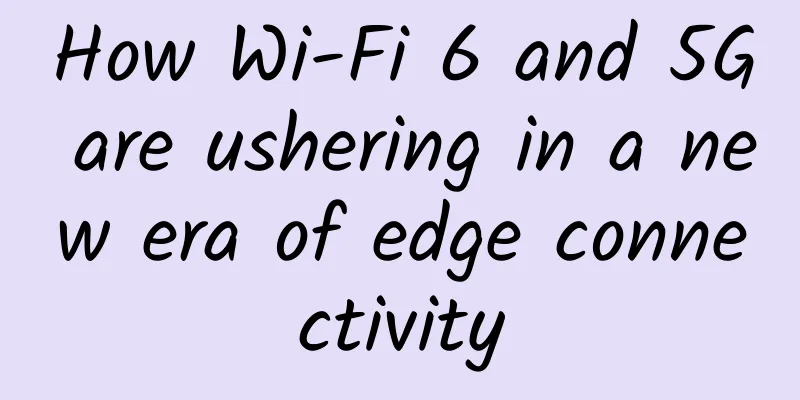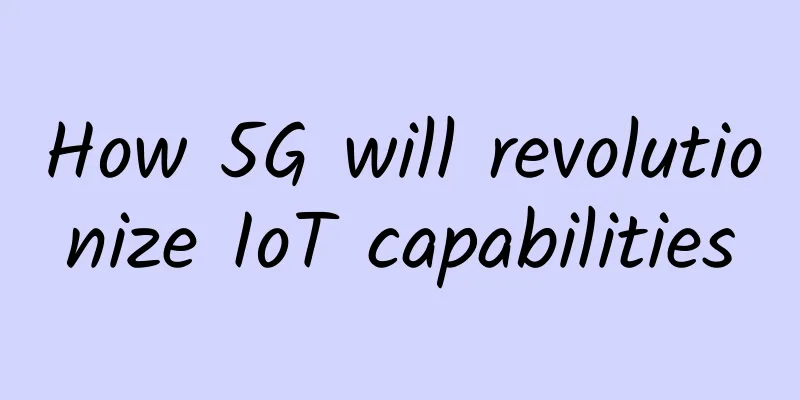How Wi-Fi 6 and 5G are ushering in a new era of edge connectivity

|
Today, the number of IoT devices is growing rapidly, which puts great pressure on the application of mainstream communication technologies such as Wi-Fi 5 and 4G. These technologies are used to connect personal devices such as phones, tablets and cars. They are also used in business applications such as IT office (e.g. employees working remotely from home) and operational technology (OT), as well as industrial applications such as manufacturing, agriculture, mining, and metallurgy. We are also seeing Wi-Fi 5 and 4G compete with video communication programs such as Facetime, Skype, Zoom, Teams, etc. On the industrial side, HD video technology is being integrated into Industry 4.0 technologies such as integrated video analytics (IVA) for quality control, facial recognition, traffic and parking automation, and emergency vehicle dispatch. These emerging technologies require faster and higher data capacity and will certainly rely on the most widely publicized and promising technologies - 5G and Wi-Fi 6. Is 2019 the Year of 5G and Wi-Fi 6 Adoption? Not so fast Based on the hype in the industry media, many people think that 2019 is the first year of adoption of 5G and Wi-Fi 6 technology and related compatible and certified connected devices. In fact, 2019 is actually more like an early innovator or early adopter stage. Last year, the global market did introduce some Wi-Fi 6 certified products, as well as a small number of expensive 5G devices. Wi-Fi 6 (802.11ax, which was the previous naming convention) is the latest standard for wireless network transmission. It is a compatible upgrade version of previous versions of Wi-Fi, which means that devices certified for earlier versions of Wi-Fi will work on Wi-Fi 6. "Upgrade" refers to higher speeds and more powerful connected devices. The transmission speed of Wi-Fi 6 is 30% faster than that of Wi-Fi 5. It can also connect to more devices due to orthogonal frequency division multiple access (OFDMA). OFDMA enables Wi-Fi 6 routers to serve multiple clients simultaneously in a channel. Wi-Fi 6 will connect to shared 2.4GHz and 5GHz frequencies, and Wi-Fi 5 only works on the 5GHz frequency. If the router supports 2.4GHz and 5GHz, 802.11n (Wi-Fi 4) is used on the 2.4GHz frequency and 802.11ac (Wi-Fi 5) is used on the 5GHz frequency. Wi-Fi 6 can work across both frequencies and can improve performance on 2.4GHz. The Enabler of Edge-Converged IoT Wi-Fi 6 is an enabling factor for the converged IoT (applying it to OT applications) by connecting and processing data from devices such as IP security cameras, LED lighting, and digital signage with touch screens or voice commands. By becoming the new standard Wi-Fi in-mesh network for office buildings, it will be used for smart building management systems, occupancy sensors, access control (smart locks), smart parking, and fire detection and evacuation. There is no shortage of hype around 5G and its transformational potential for IoT use cases, including virtual reality, autonomous driving, and more. It is built on three pillar technologies: enhanced mobile broadband (eMBB), ultra-reliable low latency (uRLLC), and massive machine type communications (mMTC). It is important to note that 5G is also using a spectrum that operates in the existing low-end 4G LTE frequency range (typically 600 MHz), which some call "low-band 5G." "Low-end 5G" offers speeds comparable to 4G LTE for mobile applications. Its signals can also travel for several kilometers and are not affected by propagation losses and the inability to penetrate obstacles such as trees, leaves, and walls like "high-band 5G." Some cities have conducted initial test deployments in urban areas with trees removed. The real 5G buzz is about "high-frequency 5G," sometimes called 5G+. It operates in the new millimeter wave bands (24GHz to 86GHz. In this way, it provides higher bandwidth, lower latency for real-time communications, and greater capacity to support many low-power IoT connections. 5G-RANs (radio access networks) need to communicate over relatively short distances. For 5G to operate at its claimed performance levels of 10Gbps and latency of less than 1ms, new edge data centers or mobile edge computing (MEC) and RAN networks must be built. For applications that require the highest speeds and reliability, 5G technology will provide three technology pillars through which unique new services can be managed: (1) Enhanced mobile broadband (eMBB), for high-throughput data transmission. (2) Massive Machine Type Communications (mMTC), which can connect a large number of simple devices. (3) Ultra-reliable low-latency communication (uRLLC) network that can reliably support mission-critical applications. With these three pillars, 5G (including edge computing MEC) will become the technology of choice for applications that require the highest speed and reliability. This includes Industry 4.0 applications such as RPA (Robotic Process Automation), robotic surgery, police and military use, holograms and virtual reality and immersive applications. 5G can also be used for high-definition video related applications such as stadiums, automated warehouses and shipyards. Applications in buildings will be more challenging because they cannot penetrate solid obstacles such as walls and have high losses. A more connected, digital and automated world The business model of 5G involves service providers purchasing licensed spectrum. These service providers need to recover the costs of RAN and MEC by charging a subscription fee for each connected device. In contrast, Wi-Fi utilizes unlicensed spectrum, which is free for everyone to use. However, public Internet service providers charge subscription fees for connected applications. Another difference between 5G and Wi-Fi is that 5G devices require a SIM card to ensure the device is connected to the subscription and does not illegally use the network, but Wi-Fi devices operate on unlicensed spectrum. 5G or Wi-Fi 6 is a wireless data transmission technology with the potential to create a more connected, digital and automated world. Wi-Fi 6 originated from IT, while 5G comes from telecommunications companies, and the two need to coexist to provide truly enhanced throughput, low latency, connection density, coverage and availability. The more interoperable the two are, the more they converge, and the more they can deliver higher performance through increased visibility and improved transition management. |
<<: The operator has announced that 5G is coming soon, and its three major advantages are obvious.
Recommend
Wholesaleinternet: $25/month-E3-1230v2/32GB/480G SSD/1Gbps unlimited traffic/Kansas data center
In addition to the cheap dedicated servers that w...
Which collaboration metrics determine the business value of an application?
The criteria for evaluating the business value of...
Huawei's Hu Houkun: Connecting to create a better intelligent world
On December 20, the 2022 China Unicom Partner Con...
Is the United States blocking Huawei, or the entire future of 5G?
[[349279]] The United States is creating obstacle...
What happens if you apply for 8G memory on a machine with 4GB physical memory?
Hello everyone, I am Xiaolin. This morning I saw ...
2022, 6G development continues to heat up
Development of 6G networks is gathering pace, wit...
Casbay: Malaysia VPS monthly payment starts from $9.59, Linux/Windows optional, 100M unlimited traffic
Last month, I shared information about Casbay and...
About remote procedure call gRPC
If you have been exposed to distributed systems, ...
WOT Kingsoft Cloud Hao Mingfei: The evolution of Kingsoft Cloud's live broadcast and on-demand basic services
【51CTO.com original article】Just last week, the W...
Let's talk about network programming
Introduction 【1】Network programming: Computers di...
Paving the way for 5G commercial use, the three major operators made major frequency adjustments
Recently, a piece of news circulated on the Inter...
The industry's first enterprise 5G router was successfully commercialized, and Huawei Network Innovation Technology Forum was successfully held in Beijing
[Beijing, China, July 22, 2020] Today, at the Hua...
How fast is 5G? How does the 5G network work?
[[257849]] 4G LTE has been providing ultra-fast d...
Is your business Wi-Fi fast enough?
Whether you are trying to troubleshoot a problem,...
How to build a secure HTTPS site step by step
[[261093]] Usually a web site opens HTTPS. Taking...









